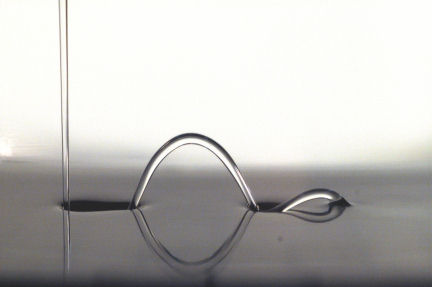- More than 2 years ago
Oil plunging into a pan filled with the same fluid drags along a thin sheet of air, which keeps the streaming fluid from immediately merging with the bath, says Matthew Thrasher of the University of Texas at Austin.

By rotating the pan, Thrasher and his colleagues got the falling oil to take a curving path. The air-shrouded stream dipped in and out of the bath several times, looking like a frozen Loch Ness monster whose tail end merged with the fluid around it. Similar effects can occur in fluids in which the velocity difference between the stream and the rest of the fluid creates a slick transition layer between them. Thrasher and his team have submitted a paper—including instructions on how to re-create the phenomenon at home—to Physical Review E.







